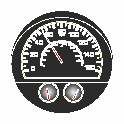Where’s the clutch? Automatic motorcycles enter the market
Published 5:00 am Friday, April 10, 2009

- As GM’s losses accelerate, bankruptcy looks inevitable
With few exceptions in the history of motorbiking, the two-wheeled world has broken down something like this: manual transmission equals motorcycle (and macho); automatic transmission equals scooter (and sissy).
But in the last year, the most caveman of two-wheeled categorizations has begun to evolve: Motorcycles are beginning to incorporate automatic transmissions.
Trending
The Honda DN-01, which is rolling into U.S. dealerships this week, lets riders do away with hand-squeezing a clutch and foot-shifting through gears when they’re also trying to stay balanced, navigate traffic and coordinate accelerating and braking. The DN, which stands for “Dream New,” is angling for two seemingly opposite ends of the market: new riders who want to feel the wind in their hair without a clutch in their hands; and seasoned riders who want to be the Jones with whom everyone else aspires to keep pace.
It’s an experiment, though. And priced at $14,599 in a down economy, it’s probably more of an experiment than Honda was intending.
“I applaud Honda for doing the DN-01 because in recent years there’s been some criticism of the motorcycle industry that it’s kind of stuck in a rut,” said Paul Dean, senior editor of Cycle World magazine. “There are markets and demographics into which motorcycling could and very well may expand, and I think having an automatic transmission technology will help that happen.”
Honda isn’t the first to try innovative transmissions that involve riders less. Oklahoma City startup Ridley Motorcycles has sold 4,000 of its V-twin “Auto-glide” automatic motorcycles in the last 10 years. Yamaha — the first major motorcycle manufacturer to introduce a clutchless motorcycle for the street — saw a 13 percent increase in sales of its FJR1300AE from March 2008 to February, a time during which total motorcycle sales, on- and off-road, were down 9 percent.
On the market since 2006, the semi-manual version of Yamaha’s popular sport-touring model allows riders to press a button or a lever to shift gears rather than coordinate their left extremities to squeeze a clutch with one hand and press a shifter with a foot. The clutchless AE now accounts for 25 percent of FJR1300 sales.
Yamaha is now “patiently watching” to see if the smaller displacement, fully and semiautomatic models that have come on the market in the last year “make any inroads,” said Kevin Foley, Yamaha’s media relations manager for street motorcycles.
Trending
So far, they appear to be.
The Aprilia Mana, on the market since last summer, now accounts for 14 percent of the company’s sales. Since the stylish Italian model came on the market with Autodrive, a transmission that allows riders to speed through town in automatic mode (using only their wits and a throttle instead of a clutch) or semiautomatic mode (moving through the bike’s seven gears with the touch of a button), the $9,899, 850 cc V-twin has become one of Aprilia’s best-sellers out of 19 available models.
With the introduction of its DN-01, Honda is poised to draft on other manufacturers’ success with a bike that takes the automatic motorcycle concept, and introduces new design and engineering.Seidel declined to say how many DN-01s were being imported to the U.S., except to say that “dealer orders were much stronger than we anticipated.”
“We’re excited about this product, but will it be successful in the market? It’s hard to say,” he said. “We know it’s going to be a niche product. Would we love to sell 10,000? Well, sure, but that’s not going to be the reality.”








